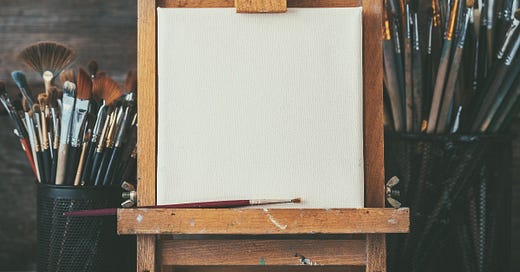Encourage your chosen subject to adopt a relaxed pose. This will feel strange to them at first, but in time will become completely natural to the point where they will take your presence for granted and pay no attention to your endeavours.
Focus on your subject’s best features. A three-quarter profile is more flattering than a full-face portrait, which can make the subject seem antagonistic. Hands should be avoided where possible. Fingers that may gently stroke a cheek, cup a breast or cradle a child’s fragile form can too easily curl into a frustrated fist. Discourage your subject from smiling. Something that seems genuine at first glance may be just a façade; a closed mouth doesn’t lie.
Sketch a rough outline. Do not press too hard but make your mark strong enough to remain visible through the layers that will be added later. These first impressions are the foundation for the finished work, so observe carefully and pay particular attention to maintaining perspective and keeping everything in proportion.
Apply the base layers for the skin and hair, but only once you have removed your rose-tinted glasses. Be careful to preserve the light in the eyes, as once this is lost it cannot be recovered.
Gradually add darker tones and shadows to give depth and definition. Observe how flesh is not a single colour, but a rainbow of reds, yellows, blues, browns and purples. An objective examination of the nuances in your subject will reveal some unexpected aspects to their nature.
Do not assiduously try to correct mistakes and flaws; these are where the character of the subject lies. If you don’t see and embrace the imperfections, you can’t truly appreciate the beauty.
Think carefully before allowing your lover to see the portrait. They may not recognise any part of themselves in your image, and may be disappointed, dismissive or defensive in response. Resist their demands to change things to fit their point of view.
Recognise when it is time to stop. It is easy to spoil a picture by overworking it. Be prepared to walk away.
When it is finished, step back. You cannot fully appreciate the final result until you put distance between yourself and your painting. Remember that this is just a likeness; it does not portray reality but reflects how things should have been, could have been, might have been.
Author: Hilary Ayshford is a former science journalist and editor now taking refuge in short form fiction. She writes short stories and micro and flash fiction across a range of genres from horror to humour and everything in between.
If you have enjoyed this story, please consider making a donation to our free-to-read literary journal.




